Behind the scenes on Election Day: 360-degree video of the ABC News election set and AR experience
For 2018 midterm election coverage, ABC News designed custom augmented reality.
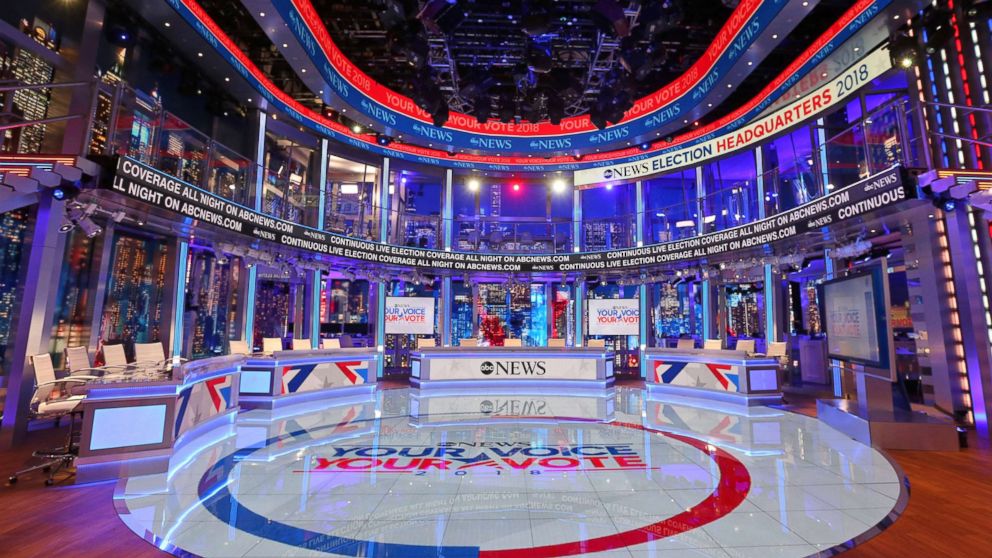
ABC News will be covering the 2018 midterms election using a custom-made 360-degree stage — complete with an augmented-reality experience.
Take a look at this behind-the-scenes 360 video of the set during rehearsal or watch it on a mobile device with the Facebook app:
The augmented reality (AR) took a full year of planning, brainstorming, designing and programming — with an estimated 700 to 1,000 hours of data testing.
Meanwhile, the set took about six months to design and build and about seven weeks to load into the studio, and it will be taken down a mere six or seven days after the election, according to ABC News Senior Production Designer Seth Easter.
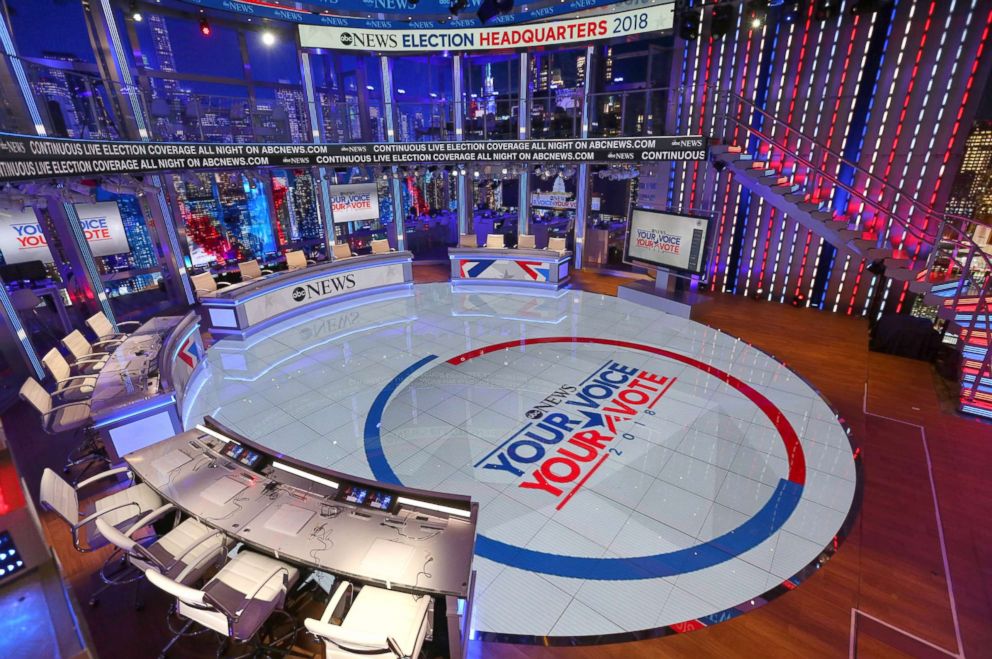
Like the set of a touring music show, the ABC News election set is temporary. Many of the parts were manufactured in Wilmington, North Carolina — and production was severely affected by Hurricane Florence, which hit the South and the East Coast in September. Supplies for the stage's large, ring boundaries were on one of the last trucks out of Wilmington prior to the hurricane, but the rest of the set had to be created piecemeal. In total, eight tractor-trailers carried over 25,000 square feet of scenery.
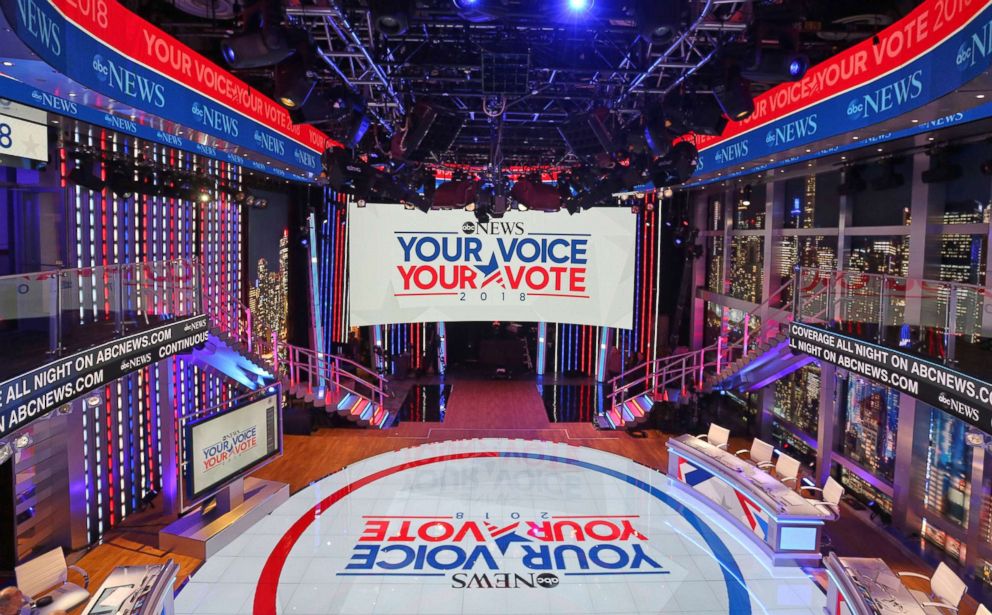
"The goal was to create a set that both the viewer and the presenters ... could understand visually [as depicting] a very important election," he said.
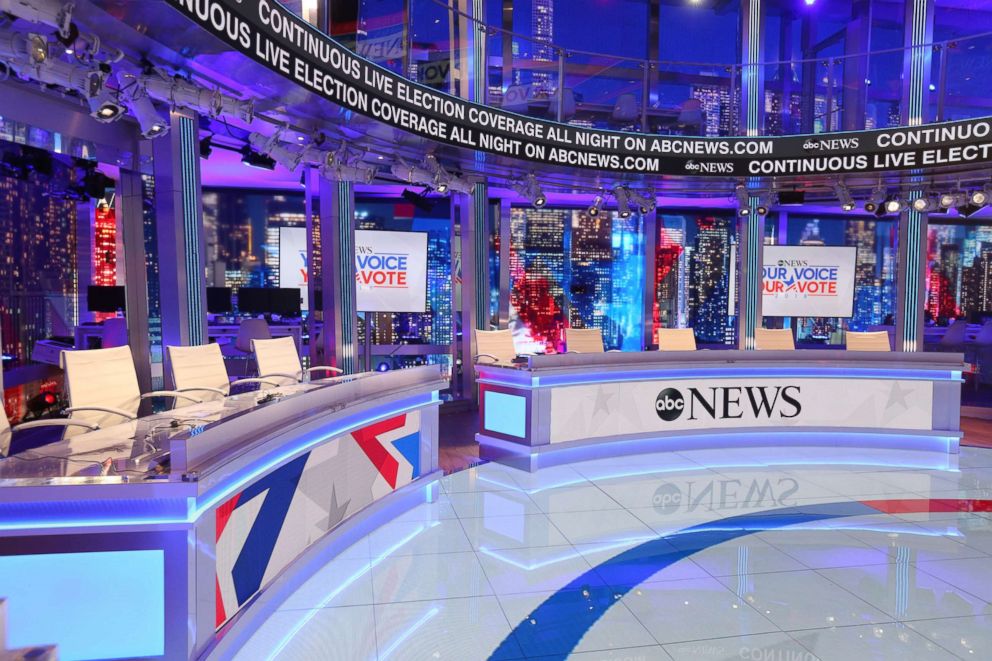
With all 435 seats in the House, 35 in the Senate and 36 governorships up for election, ABC News Director of Graphics Operations Tamar Gargle and Creative Director Hal Aronow-Theil wanted to present data to viewers without cutting away to full-screen graphics. "There’s great potential for creative, interactive storytelling to help the viewer better understand complex information," they said.
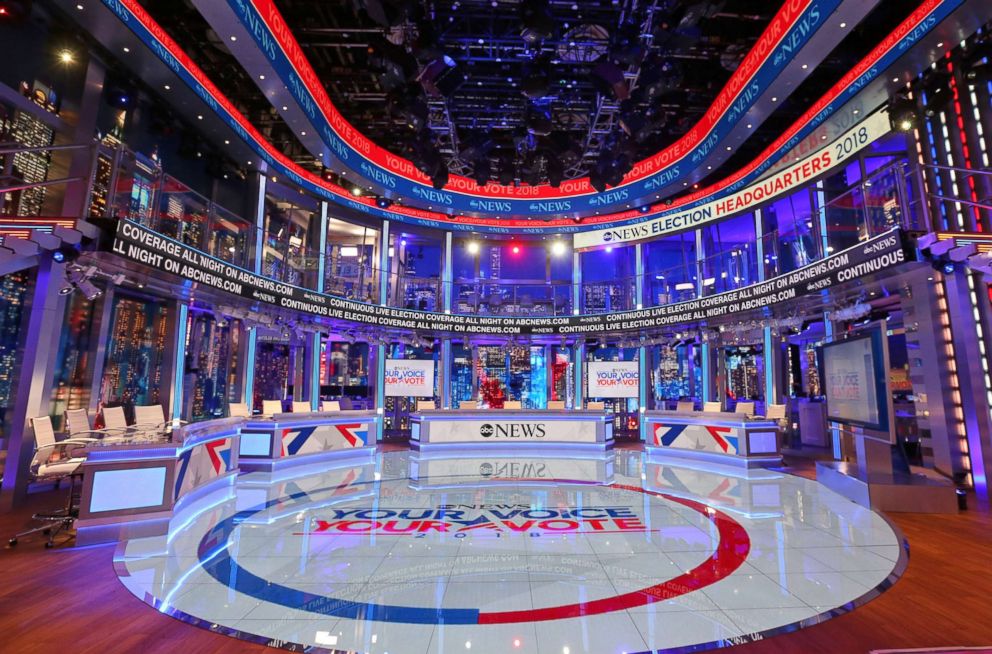
Gargle and Aronow-Theil led the development of an augmented-reality experience that allows audiences to maintain their view of ABC experts on set while learning about the election and its results visually.
"We have had consultants from three vendors: Astucemedia, who are our graphics and creative consultants; Vizrt, for the graphics engines and graphics tracking; and Mo-Sys, the camera-tracking system," Gargle said.
The team that worked on the ABC News elections AR came from all over the world and included graphics artists, production assistants, engineers and technical consultants from as far as the UK, Canada, Germany, Argentina, Croatia and Dubai.
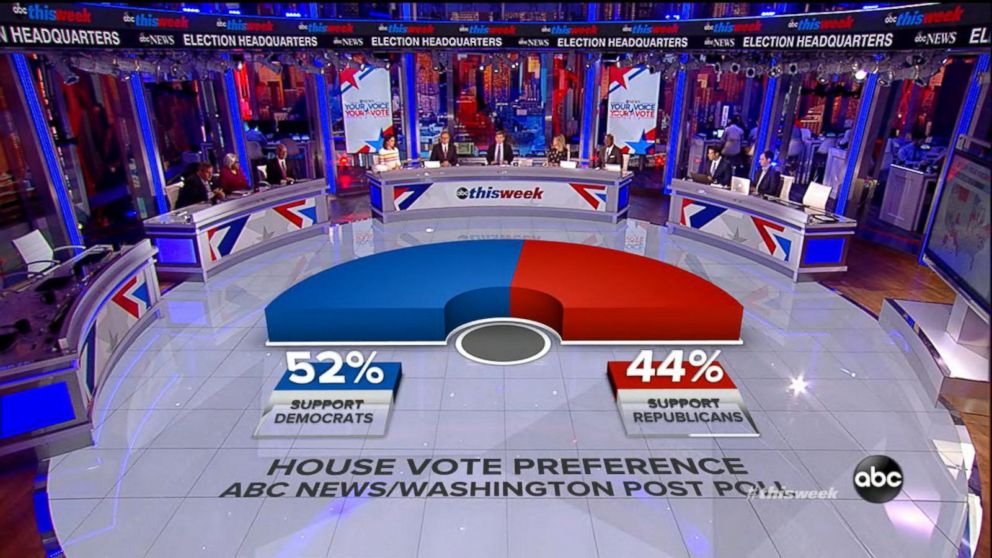
The graphics required approximately 36,000 lines of computer code and over 1,000 AR tracking markers to be placed within the set, according to Gargle and Aronow-Theil. The anchors trigger data visualization through interactive touch screens. The complicated dance requires collaboration between the editorial, studios and graphics teams as real-time data comes into ABC News headquarters from across the country.
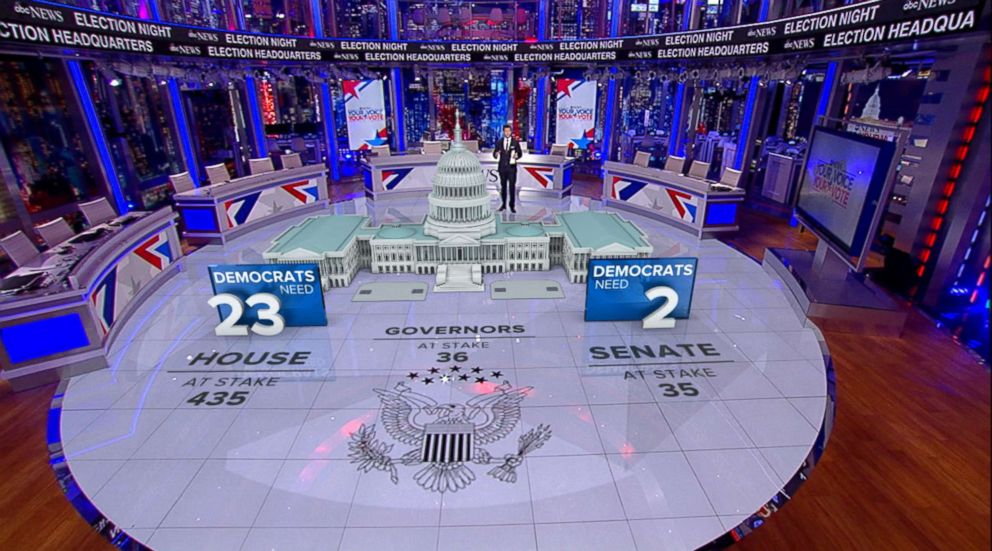
The AR images are projected "thorough the combination of an optical tracking system mounted to our studio cameras communicating with our real-time 3D graphics system," Gargle said. "There is a web of tracking markers, essentially reflective stickers, that have been applied to the lighting grid and the set pieces that are in the ceiling. The tracking system uses those markers in conjunction with sensors attached to the cameras to calculate where the camera is in 'space'. This data is sent to our graphics system, which maps the graphics to the proper place in 'real' space so it appears that the graphic is in the room."
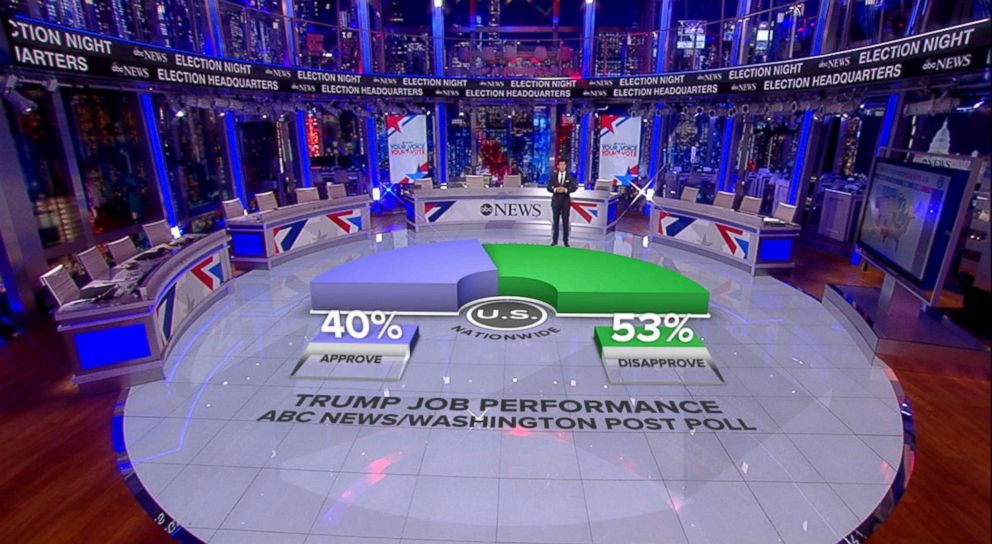
The team developed a three-dimensional image of the U.S. Capitol and seats within the House and Senate chambers to display real-time election result data.
ABC News has been experimenting with AR for a while now. It was incorporated into coverage of the British royal wedding earlier this year.
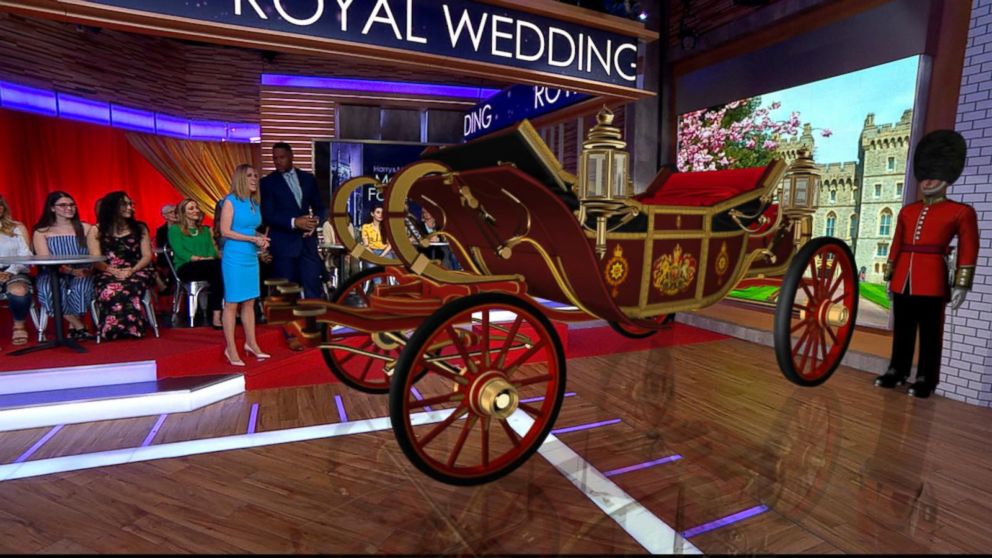
“Good Morning America” did its first true AR medical story this past spring about heart disease. "Where we would normally cut away to a 3D animation of clogged arteries, Dr. Jen Ashton was able to interact in the studio with a three dimensional AR heart to help the viewer better understand heart disease," according to Aronow-Theil and Gargle.
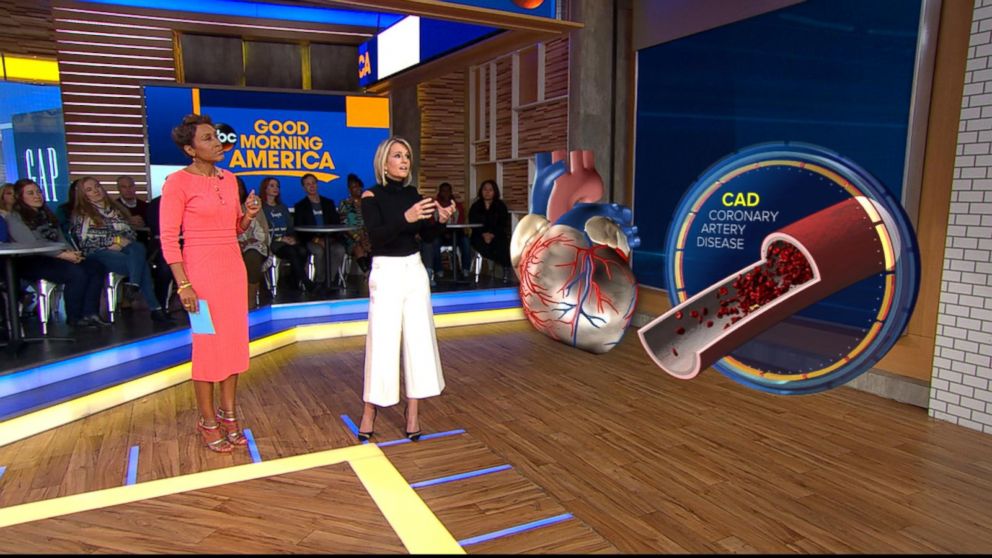
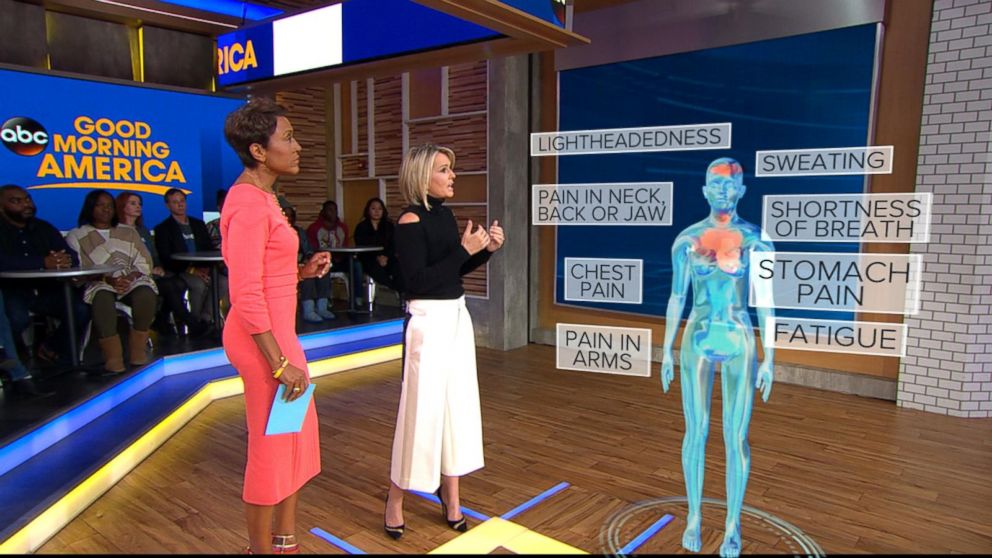
ABC News’ “Your Voice, Your Vote” special coverage of the 2018 midterm election starts at 8 pm on Tuesday, November 6, 2018. ABC News Live will provide full coverage starting at 4:30 PM ET – Watch on ABCNews.com/Live, The ABC News App, Hulu, and The Roku Channel.




